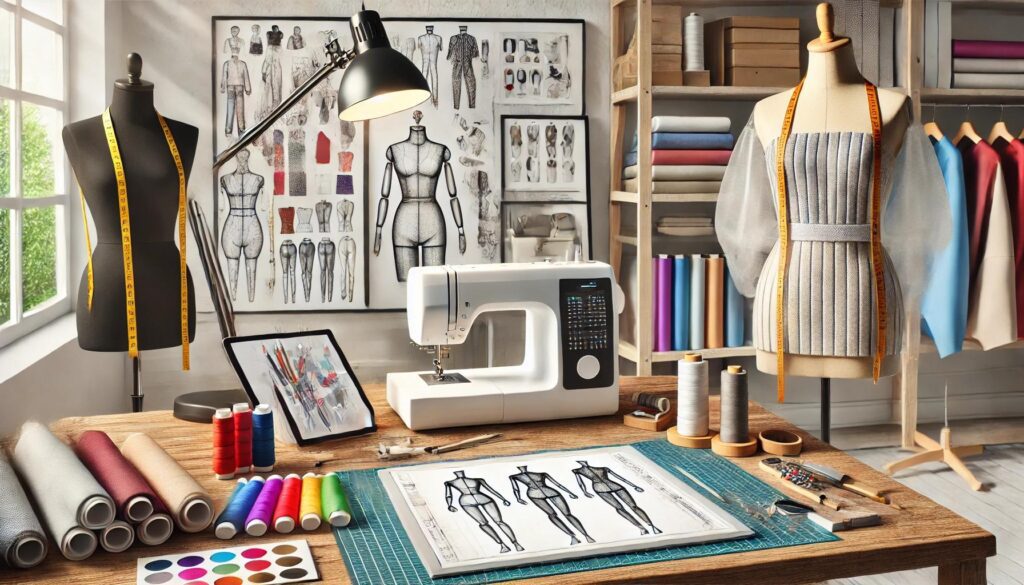
Template fashion design is revolutionizing the way designers bring their creative visions to life. Whether you’re a seasoned professional or just starting out, using templates streamlines the process of creating unique and stylish garments. Templates provide a ready-to-use foundation for designing patterns, making them an essential tool for efficiency and consistency. From sketching new ideas to producing detailed blueprints for sewing, template fashion design offers a time-saving solution without compromising creativity. In this guide, we’ll explore the benefits of templates, the types available, and how to use them effectively in your fashion projects.
Template Fashion Design: A Guide to Effortless Style Creation
Template fashion design is revolutionizing the way designers bring their creative visions to life. Whether you’re a seasoned professional or just starting out, using templates streamlines the process of creating unique and stylish garments. Templates provide a ready-to-use foundation for designing patterns, making them an essential tool for efficiency and consistency. From sketching new ideas to producing detailed blueprints for sewing, template fashion design offers a time-saving solution without compromising creativity. In this guide, we’ll explore the benefits of templates, the types available, and how to use them effectively in your fashion projects.
What Is Template Fashion Design?
Template fashion design refers to the use of pre-made layouts, patterns, or outlines to create clothing designs. These templates act as a foundation or framework, providing guidelines for proportions, cuts, and measurements. They’re available for a wide range of garment types, from dresses and jackets to trousers and accessories.
By starting with a template, designers can focus more on personalizing their creations rather than building patterns from scratch, making the design process faster and more efficient.
Why Use Templates in Fashion Design?
Using templates in fashion design offers numerous advantages, including:
- Time Efficiency: Templates eliminate the need to start designs from scratch, saving valuable time during the design process.
- Consistency: Templates ensure uniformity in sizes, shapes, and cuts, which is especially important in mass production.
- Beginner-Friendly: Aspiring designers can use templates to learn about garment construction without the steep learning curve.
- Cost-Effective: Templates reduce the need for costly trial-and-error, especially during the prototyping phase.
- Creative Freedom: With a base structure already provided, designers can focus on experimenting with fabrics, colors, and embellishments.
Types of Templates in Fashion Design
Fashion design templates come in various forms, catering to different stages of the design process. Here are the most common types:
- Flat Sketch Templates: These are simple outlines of garments viewed from the front, back, and side. They’re perfect for visualizing designs on paper or digitally.
- Figure Templates (Croquis): These include human figure outlines on which designers can draw clothing to see how it will fit and drape on a body.
- Pattern Templates: Pre-drafted patterns that can be cut and sewn directly onto the fabric, offering precise measurements and cuts.
- Digital Templates: Templates used in software like Adobe Illustrator, CLO 3D, or Canva for digital fashion design.
- Sewing Templates: Full-size patterns for directly cutting fabric, often used by hobbyists and small-scale designers.
How to Use Templates Effectively
1. Customizing Templates for Unique Designs
While templates provide a foundation, true creativity comes from customization. Here’s how you can personalize templates to stand out:
- Modify Shapes: Adjust hemlines, necklines, and sleeve styles to reflect current trends or personal preferences.
- Experiment with Fabrics: Use unconventional fabrics like recycled materials or bold prints to make your designs unique.
- Add Embellishments: Incorporate elements such as embroidery, lace, or appliqué to elevate your template-based designs.
By experimenting with these options, templates become a tool for creativity rather than a constraint.
2. The Role of Templates in Fashion Collections
Templates are not just for single pieces—they play a vital role in creating cohesive collections. Designers can:
- Ensure Consistency: Templates help maintain uniform proportions and design elements across a collection.
- Save Time: Use the same template for variations of a garment, such as a dress with different sleeve lengths or fabric types.
- Streamline Production: Manufacturers can replicate designs more easily when they are based on standardized templates.
Using templates effectively can transform a single concept into an entire fashion line.
3. How Technology is Transforming Template Fashion Design
The fashion industry has embraced technology, and templates are no exception. Here’s how digital tools enhance template-based design:
- 3D Rendering: Software like CLO 3D allows designers to visualize how garments will look and move before production.
- Collaboration: Digital templates can be shared with teams and clients, speeding up feedback and approvals.
- Automation: Some programs can automatically adjust templates to fit different sizes or body shapes, saving hours of manual work.
As technology continues to evolve, template fashion design is becoming more precise, innovative, and accessible.
4. Challenges in Using Templates and How to Overcome Them
Although templates offer many benefits, they come with challenges:
Fit Issues: Templates often need adjustments to suit unique body measurements.
Solution: Learn basic pattern-making techniques to refine template designs.
Lack of Originality: Over-reliance on templates can lead to designs that feel generic.
Solution: Use templates as a foundation, not a final product. Add your style and creativity.
Learning Curve for Digital Tools: Software-based templates can be intimidating for beginners.
Solution: Take online courses or tutorials to familiarize yourself with design programs.
By addressing these challenges, designers can maximize the benefits of templates.
5. Building Your Own Template Library
Creating a personalized library of templates can be a game-changer for efficiency and creativity. Here’s how to get started:
- Identify Your Needs: Focus on templates for garment types you design most often, such as tops, dresses, or trousers.
- Invest in Quality: Purchase templates from trusted sources or design your own for custom projects.
- Organize Digitally: Use folders and tags to categorize templates for quick access.
- Update Regularly: Stay current with fashion trends by adding new templates and retiring outdated ones.
A well-curated template library can save hours of work and keep your designs fresh and relevant.
Why Templates Are a Must-Have for Designers
Template fashion design is an invaluable tool for today’s fashion industry. Whether you’re a beginner exploring the basics of garment construction or a professional launching a new collection, templates offer a foundation for creativity and efficiency. From flat sketches to advanced 3D digital templates, the possibilities are endless when you combine innovation with your artistic vision.
Conclusion
Template fashion design is a game-changer for both novice and experienced designers, offering a streamlined and efficient approach to creating stylish garments. By leveraging templates, you can save time, maintain consistency, and unlock new levels of creativity. Whether you’re sketching concepts, sewing prototypes, or producing digital designs, templates provide a reliable starting point for every step of the process.
Explore the vast array of templates available online or create your own to align with your unique vision. With the right tools and techniques, template fashion design can help you bring your ideas to life with ease and precision.

